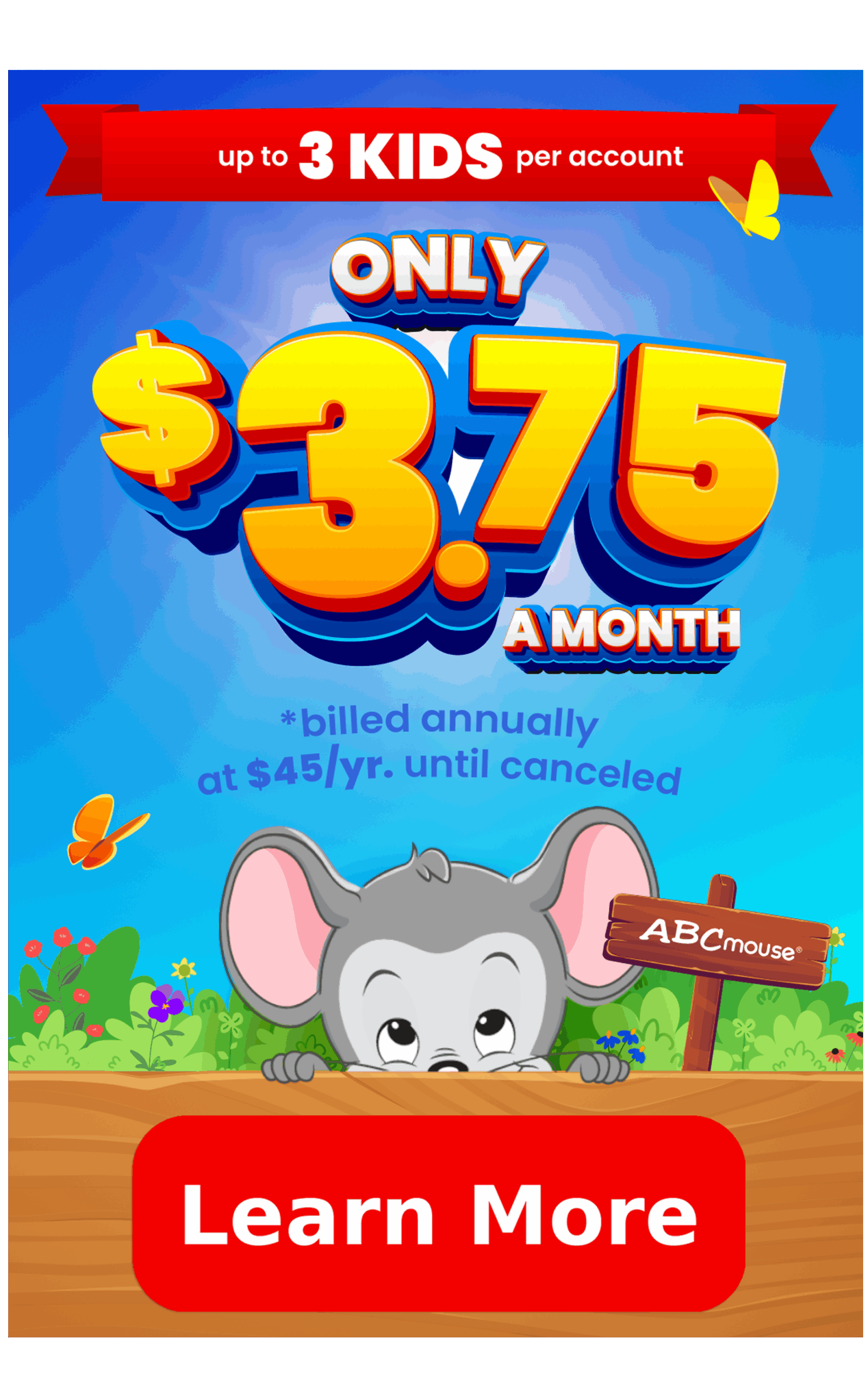
10 Expert-Recommended Methods for Teaching Letter Sounds
Tips from ABCmouse early education experts on how to teach letter sounds to prepare your child to learn to read.
Learning to read is like unlocking a secret code, and the key to that treasure trove of knowledge is mastering letter sounds. Before your child can learn to read, they must understand the sounds each letter makes and how those sounds blend to form words.
Teaching letter sounds is a foundational aspect of early literacy education. It’s a critical skill that helps young learners progress from recognizing letters to reading and writing fluently.
Here are 10 straightforward and simple strategies and activities recommended by our educational experts to help you seamlessly teach your child letter sounds.
1. Practice Letter-Sound Correspondence
Make a letter sound, and ask your child to recognize which letter or group of letters represents that sound in writing. Or better yet, have them write the letter of the sound they hear.
You can also progress to vowel sounds, which can be trickier due to their varying representations in words.
Continue with different sounds, including both simple consonants and more complex sounds (like /sh/ or /ch/).
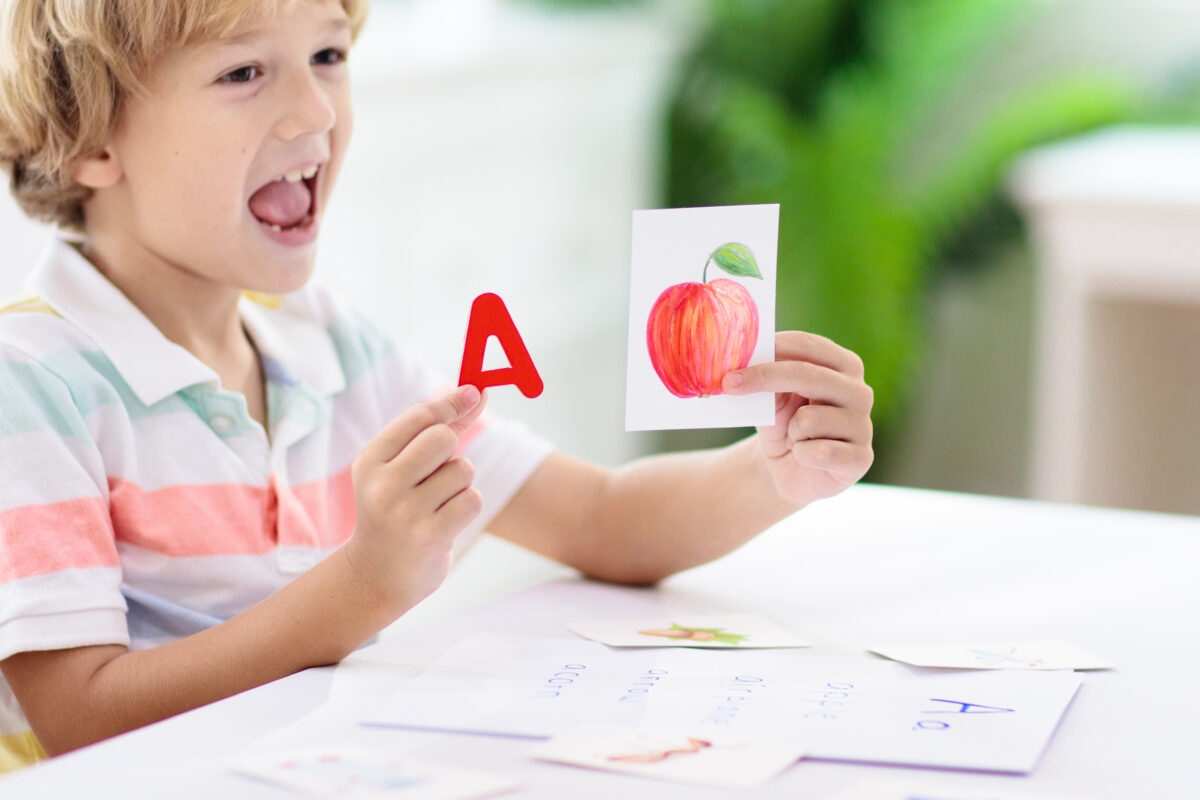
2. Begin at Home: Start with Their Name
A child’s name is perhaps the most familiar word for them which makes an excellent point to start teaching letter sounds. Recognition of the sounds in their names will offer a sense of accomplishment and add to their interest in learning other letter sounds.
3. Engage the Senses: Touch and Feel Letters
Did you know learning can be a tactile experience? Introducing ‘touch and feel’ letters is a great strategy to make learning letter sounds fun and engaging.
Crafting letters from various materials like foam, sandpaper, or fabric allows children to touch and feel the letters, associating the shape with its specific sound. Offering multiple opportunities to touch, feel, and sound out letters can boost retention.

It’s important to support your child in this activity and help them link the letter names to the letter sounds. (e.g., Point out the letter r and say, “The letter r stands for the sound /r/ sound. Encourage the child to say the letter r sound.)
In addition to tactile learning, consider the auditory dimension of learning sounds. “Rather than teaching children rules, expose them to lists of words that all follow a particular pattern.” According to Nell K. Duke, Professor of Education and Psychology at the University of Michigan’s Marsal Family School of Education, this approach can help children discern patterns and consistencies in phonics, enhancing their ability to decode words more effectively.
4. I Spy: Find Words that Start with each Letter Sound
Incorporate this strategy into engaging activities like the game “I Spy.” For example, you might say, “I spy with my little eye something that starts with the letter ‘G’.” This not only makes learning fun but also encourages children to think critically about the sounds letters make and the objects around them that share these initial sounds.
By using objects and symbols familiar to the child, you enhance their ability to make meaningful connections between sounds and their written representations, facilitating a deeper understanding and retention of letter sounds.
5. Link Sounds with Actions: Use Visual Cues
Integrating visual cues, such as pictures, gestures, or signs, can significantly reinforce the process of learning letter sounds. For example, when teaching the letter ‘A’, you could use a picture of an alligator to link the letter ‘A’ with its short ‘a’ sound. This method creates a memorable association for the child, making the learning experience both interactive and effective.
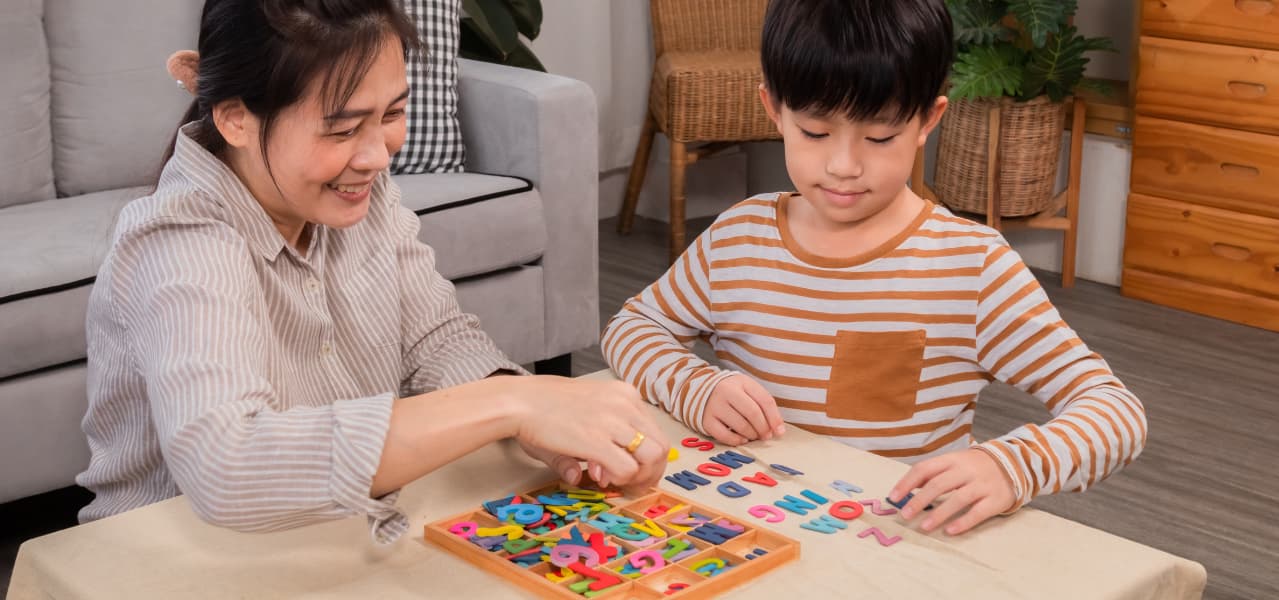
By linking sounds with visual cues and actions, you create a multi-sensory learning experience that is both effective and enjoyable for children. It’s a strategy that not only teaches but also engages and delights, paving the way for a successful and comprehensive phonics education.
6. One Step at a Time: Introduce One Letter at a Time
Educational research highlights the benefits of focused learning. This methodical approach ensures they’ve adequately grasped each letter sound. As the child learns to blend words that will reinforce their letter-sound knowledge, it’s okay to move on and expose the child to other letters even if they haven’t fully grasped the previous ones.
On average, spending about a week per letter can be a good benchmark. However, it’s important to tailor this timeframe to your child’s unique pace of learning. Some children might require more time, while others might grasp the sounds more quickly.
The key is to observe and respond to your child’s cues, ensuring they are comfortable and confident with each letter before introducing a new one. This paced approach fosters a deeper understanding and retention of letter sounds.
7. Phonemic Awareness Activities
Phonemic awareness is the skill of recognizing and working with the smallest units of sound within words, known as phonemes. For example, the word “sun” is made up of three sounds: /s/, /u/, and /n/.
This critical early literacy skill enables young readers to blend individual sounds in words together, laying the foundation for successful reading.
One effective way to enhance phonemic awareness is through games that emphasize the matching of initial word sounds to their corresponding letters.
For example, you could introduce games like Alphabet Sounds at the Market, or First Letter in Line where children match pictures or objects based on the first sound, such as an item beginning with the /s/ sound versus those starting with the /p/ sound. Additionally, you could present printed words with similar spellings like “bat” and “cat”. Then, guide the child to identify the shared /a/ and /t/ sounds in both words.
Through these interactive and engaging activities, children can develop their ability to hear and identify the individual sounds in words, fostering a smoother transition to proficient reading.
8. Get Creative: Strategize Learning Sessions
Making learning lessons fun can help hold children’s interest while also introducing them to new types of thinking. For instance, consider taking advantage of their love for crafts. You could utilize colorful cut-outs of letters and encourage them to create a collage on their bedroom wall, helping them recognize and memorize the alphabet in a vibrant way.
Introduce activities like shaping playdough into letters or tracing letter shapes in the sand. This not only makes learning fun but also reinforces memory and understanding of the letter sounds.

9. Interactive Games
In the age of digital learning, leveraging interactive games and tools is a highly effective way to teach phonics skills. These games are not just about playing; they are crafted to transform learning into an adventure.
#1 Downloaded Kids’ Education App in the U.S.
The ABCmouse app has so much to offer! You and your child will find 10,000+ games and activities designed by curriculum experts to nurture math and reading skills, along with an extensive digital library and so much more. Our research-back curriculum focuses on preschoolers through second graders.
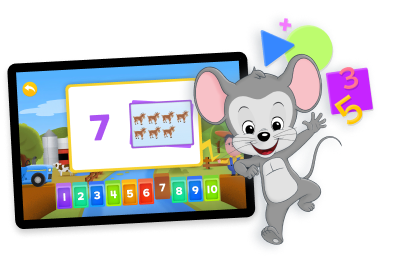

Then just $14.99 a month until canceled
Unlike passive learning methods, interactive games require active engagement from children. This engagement is crucial in reinforcing learning as kids interact with letters and sounds in a dynamic environment.
10. Practice Makes Perfect: Continuous Exposure is Key
Mastering letter sounds, much like any skill, flourishes through varied and continuous exposure rather than mere rote repetition. It’s important to embrace a learning cycle where children are exposed to letters and their sounds across different activities, allowing them to absorb, forget, and then reabsorb these concepts. This process of learning, forgetting, and relearning is a natural and beneficial aspect of a child’s educational journey.
Instead of repetitive drills, focus on integrating letter sounds into a range of engaging activities like teaching letter sounds within the context of words and sentences, helping children understand how they function in everyday language or incorporating letter sounds into everyday experiences, such as identifying letters and sounds in environmental print like signs and labels.
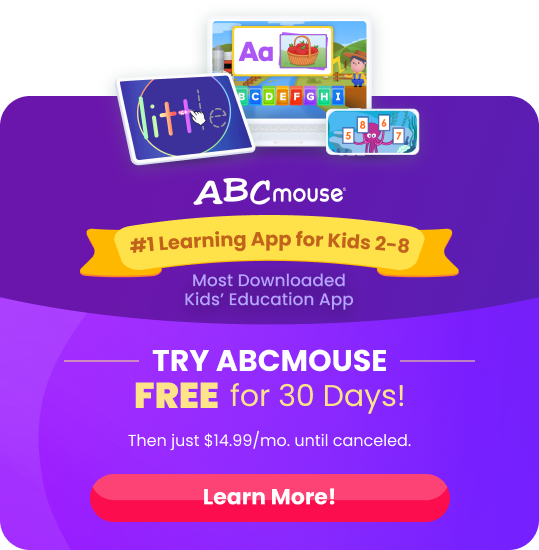
ABCmouse’s expert advice review process:
Our team of ABCmouse Curriculum Experts, made up of talented professionals in early childhood education and development, take a close look at educational content and learning claims. They put in the effort to make sure our information is accurate and current. We have a certified educator or another respected authority review the content, matching their expertise with the topic at hand. They’ll make sure the content is thorough and follows the latest research and educational guidelines. If they think we can make things even better, they’ll chat with our editorial team, and we’ll make those improvements right away. Only after a reviewer gives their thumbs-up does a piece of content get the official stamp of approval in the byline.


